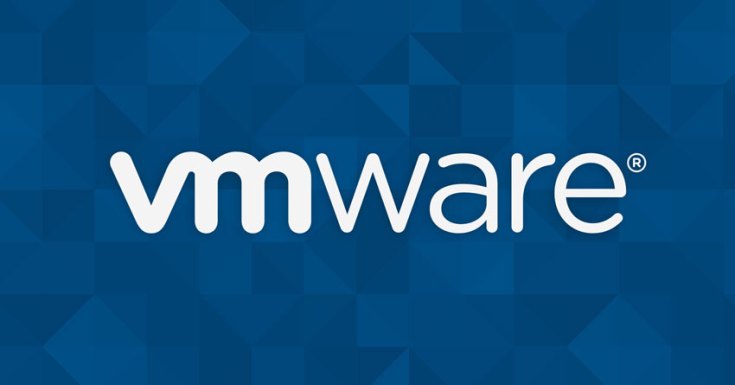What does VMware Tanzu mean for VMware customers?
At the end of August, VMware announced its Tanzu portfolio; a suite of products and features which will allow customers to build, run and manage modern applications on Kubernetes through vSphere. If you have been following VMware’s recent acquisitions – such as Heptio, Bitnami and Pivotal – the announcement will come as no surprise.

At the end of August, VMware announced its Tanzu portfolio; a suite of products and features which will allow customers to build, run and manage modern applications on Kubernetes through vSphere.
If you have been following VMware’s recent acquisitions – such as Heptio, Bitnami and Pivotal – the announcement will come as no surprise. VMware has been transforming its business to focus on Kubernetes and multi-cloud rather than straight-up virtualisation for some time.
To understand why VMware has done this and its significance, you need to look at what is happening in the cloud and in the world of applications. Up until a few years ago, people believed that the cloud would consolidate workloads, but the reality is that businesses are putting more instances across multiple platforms.
In order to adapt to this shift toward multi-cloud, companies have adopted containerisation and more recently Kubernetes to address the challenges containers bring.
Why Businesses Adopt Containers
Containers were introduced in 2013 and have rapidly become adopted by many businesses. Containerisation can be seen as another form of virtualisation – virtual machines virtualise the hardware and containers virtualise the operating system.
A container consists of an entire runtime environment. That’s an application and all of its dependencies, libraries and other binaries, with the configuration files needed to run it, all in one package. Containers ensure that the application will run reliably across multiple computing environments. For example, a containerised application would behave in the same way from a development environment on a laptop through to staging and into production in the cloud.
Businesses are adopting containers because the ability to commit changes and run the application anywhere alleviates issues around version control, network topology, storage and security policy. Also, unlike virtual servers – which are usually measured in gigabytes, containers are measured in megabytes, allowing them to boot in seconds.
Kubernetes
As the adoption of containers begins to spread, they bring their own, unique problems. When you manage applications that comprise of hundreds of containers which are spread across multiple hosts and require connection to the outside world for distribution, load balancing and scheduling, there’s a tool required to manage the application, which is known as orchestration.
This is where Kubernetes comes in. Originally built by Google to cope with running its own containers in production, Kubernetes has now become the go-to open-source system for deploying, scaling and managing containerised applications in multi-cloud environments.
VMware Tanzu Mission Control
Kubernetes create a modern API-driven dynamic infrastructure which comes with a lot of new, moving elements and day 2 operations issues such as patching, upgrading and scaling. This highly fluid environment makes enforcing security policies becomes more complex. For example, you must ensure identity and access control systems are correctly configured. Managing these kinds of issues in a single Kubernetes cluster is a challenge… managing it across a large deployment is practically impossible.
VMware’s Tanzu Mission Control – the first Tanzu tool to be announced – tames this beast. It delivers an API-driven platform that allows policies to be applied to individual clusters or groups of clusters, giving developers the freedom to work within the guidelines that have been established. It securely integrates with a Kubernetes cluster through an agent and supports a range of operations including lifecycle management of cloud-based clusters.
What does this mean for VMware and you?
After establishing the virtualisation market in the 2000s, VMware now claims to run 80 per cent of all virtualised workloads globally. However, the open source nature of containers and Kubernetes means that VMware needed to take action and keep their position at the heart of the corporate infrastructure stack.
Its acquisition of Heptio, founded by two of the engineers that developed Kubernetes at Google, is helping VMware stay relevant in a multi-cloud world and allows it to compete with Red Hat in the containerisation and application modernisation market. The IP that came with the acquisition is being integrated with VMware stack, bridging the gap between virtualisation and containerisation.
VMware’s partnerships, first with AWS, Azure and then IBM shows that it’s capable of being a true multi-cloud player. The acquisition of Cloudhealth brings with it a multi-cloud management platform along over 3,000 customers including Dow Jones, Pinterest, Yelp and Zendesk.
With vSphere already embedded into hundreds of thousands of organisations, VMware is positioning itself at the centre of multi-cloud deployments, providing the tools to integrate and manage new technologies into the existing stack.
If you are already a VMware customer, then you will see the benefits of this change as you are able to start to manage your containers and your existing infrastructure through the same familiar tools that your team use today. Even if containers are some way off for your organisation, take comfort in the fact that, as the world of corporate technology changes, your investment in VMware is protected as they evolve their business, working towards the next-gen toolset required to help future proof your business.
Interested in speaking to a cloud provider who can support you today while helping you move forward on your cloud journey? We can help you modernise your applications and approach to infrastructure in a manageable, step-by-step manner. Check out our VMware hosting, private cloud hosting, desktop as a service or application platforming services for more information.

Question?
Our specialists have the answer

